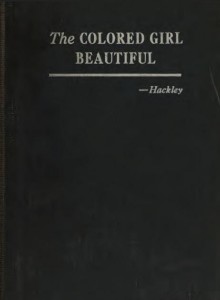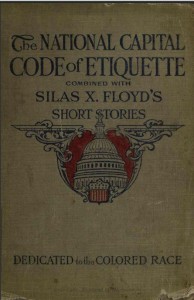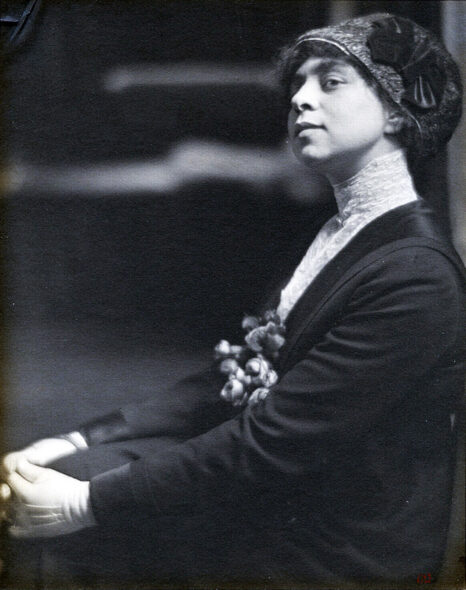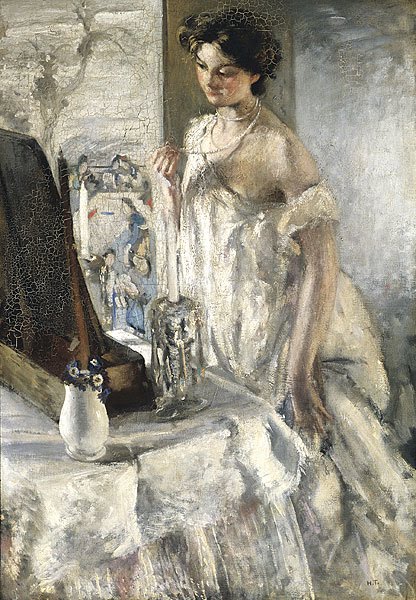During the Gilded Age, American publishers met the needs of social climbers aspiring to emulate their betters by producing endless etiquette manuals, so did small presses meet the aspirations of newly wealthy blacks surging into the enclaves formerly preserved for the black elite. These etiquette books addressed the unique situation in which black Americans were placed, for while the authors stressed the importance of good manners and breeding, they also emphasized the need to repudiate the common perceptions of blacks and their “natural” behavior.
Of this period, two books remain extant:
 The Colored Girl Beautiful (1916) by E. Azalia Hackley
The Colored Girl Beautiful (1916) by E. Azalia Hackley
Hackley, a classical singer who studied voice in Europe, “championed the use of African-American spirituals among her own people as a tool for social change.” According to the manual, The Colored Girl Beautiful was compiled from talks given to girls in colored boarding schools across the United States.
Though Hackley addresses the spiritual side of black women and their role in the uplift of the race, it is most telling that much of her advice focuses on refuting the notion of black women as harlots and jezebels (an image forced on them to excuse the indignities they faced from white men), and how to navigate being an educated, upwardly mobile young woman in a time where her intelligence and breeding was not appreciated.
To modern eyes, the manual can seem overly conscious of presenting a positive image before whites, but otherwise, regarding gender roles, it is no different than what can be found in etiquette manuals aimed at the general populace.
 The National Capitol Code of Etiquette (1920) by Edward S. Green
The National Capitol Code of Etiquette (1920) by Edward S. Green
Less is known of Green, but his etiquette manual includes short stories contrasting mannered and unruly behavior written by Silas X. Floyd, a graduate of Atlanta University and Baptist pastor.
Prior to the Great Migration which drew blacks from the South to northern cities like Chicago or Detroit or New York City, Washington D.C. had long been a mecca for blacks. This book was written at the height of Jim Crow, when blacks of the elite and of the lower classes, were barred from public places of amusement.





I thank you for this post on etiquette. I operated a Tea Room and Finishing School in Seattle many years ago. My focus was on the Victorian society and engaging people of color. I would have loved to have these two books to share. Like you mentioned the books really cater to all people who are interested in polishing their social behavior. After reading Bernard Berenson’s life story I also found Belle Green which you posted about. As a previous journalist, poet and story teller thank you for sharing this valuable information on your site.
Your site is valuable and provides great detail. Thank you for wonderful post from Belle Green to poets to etiquette.
Thank you for this timely article. Next month, I will be addressing the subject of good old fashion etiquette to a small troop of Girl Scouts.
What I read will help immensely,
Thank you Lady Estelle! I hope your talk goes well.
Where’s the manual for white people on how to be polite to black people?
If only such a manual had existed! 🙂
Very interesting! Anything on etiquette of the period is fascinating. I found the second book in only 5 libraries. I am curious to check them out!
Hi Lauren! Click the book titles to go to digitized versions of these etiquette manuals.